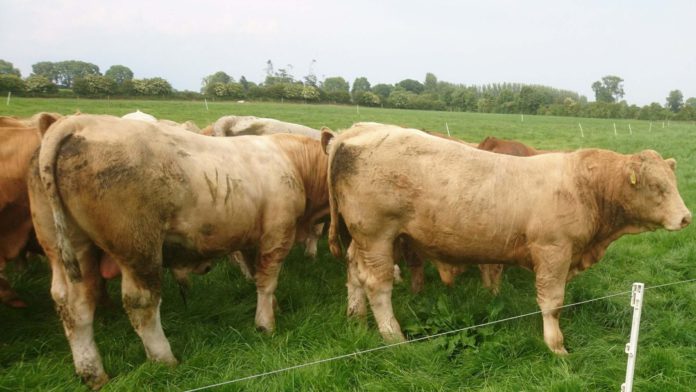Noel McNeil, CAFRE beef and sheep adviser, explains why there is a need for market specifications and how beef farmers can meet the three main targets: weight, conformation grade and fat class.
In summary, farmers can control what is happening inside the farm gate.
Meeting specification maximises price and ultimately generates more income.
Many different factors are considered when determining the specification of animal carcases and the suitability for particular markets.
They include:
- Carcass weight;
- Fat class;
- Age at slaughter;
- Number of farm residences;
- Quality assurance status;
- Breed;
- Country of origin.
Beef prices can be volatile, and the base price is outside a farmers’ control in most cases.
Beef market specifications
However, meeting the specification targets is an important way of ensuring the best price possible is achieved, which is very much within farmers’ control.
Market specification for carcases allows the beef produced to access as many retail markets as possible.
For example, Great Britain is the largest market for Northern Ireland beef. Farm Quality Assurance status is key to accessing this market.
Other elements that farmers can control include the number of residences or days on the last farm, and statistics from LMC indicate that most animals meet these specifications.
Farmers can exercise control over age at slaughter, carcase weight, conformation grade and fat class.
However, LMC statistics show that they do not have the same success in meeting these elements of the specification.
- Three areas:
- Weight;
- Conformation;
- Fat class.
Weight
Carcase weight requirements are normally 280-380kg.
Processors aim to sell as much of the carcase as possible into the highest value market.
These are demanding in terms of consistency and quality, with pack size being an important part of this.
Sirloin or fillet steaks of the same retail weight from a 440kg carcase and a 330kg carcase will be very different in shape. This makes the marketing of the heavier carcase more difficult.
Farmers can bring cattle to heavier weights to get adequate fat cover. Both breeding and feeding regimes can contribute to this.
A higher energy diet will enable animals to put down fat cover and help with finishing.
Farmers should look at the timing of the final high energy diet finishing phase to optimise weight and fat cover.
Having a weighbridge and weighing and condition scoring cattle regularly to monitor performance will help farmers select cattle at the correct weight and fat cover.
Conformation grade
Breeding or genetics has a significant impact on grades. However, diet also plays an important role in making sure animals reach their full genetic potential.
Suckler-to beef farmers have a lot of influence in this area. They are in full control of both the cow type and the bull they use to sire offspring.
E and U grades may pay better on a pricing grid. However, farmers need to carefully consider the management issues with more extreme carcase animals, such as calving ease.
Beef finishers: however, have to judge cattle at purchase to try and select as many as possible to meet this desired grade. Diet then comes into play to make sure the animal reaches its full genetic potential.
Fat class
The ideal fat class is 3, 4-/+. Steaks from the loin of an animal, which is not well covered, will not look visually appealing. Also, it will cook differently, which could lead to a negative consumer experience
Carcases, which are over finished, are lower yielding in saleable beef due to more trimming, leading to waste.
Figures from LMC deadweight price reporting for quarter 2 2021 show that 48% of young bulls finished were under a fat class 3.
A 380kg R grade young bull at a fat class 1+ could potentially lose 20p/kg over a fat class 3 carcass with a potential loss of £76.
Breeding and diet are again important factors in getting to the desired fat class.
For example, at the extremes, native breed heifers will lay down fat at a much earlier stage than continental bulls and will do so on much lower energy diets.
The ideal finishing diet for an animal depends on breed and type. Young bulls, steers and heifers require different diets and energy contents to achieve optimum performance.
Higher protein diets are good for growing the frame of an animal. However, to put down sufficient amounts of fat, it needs to be on a high energy diet.
To assess an animal for fat cover, the areas to look at are the tail head, transverse processes and along the ribs, and in heifers, around the udder. Handle animals in a safe handling facility.





